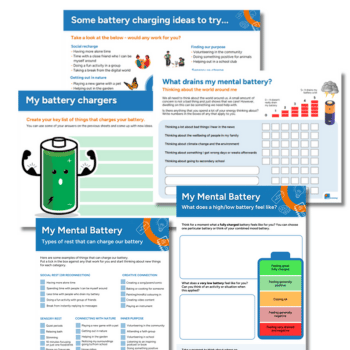Improving attendance in schools – Why attendance rewards penalise the students they’re designed to help

Life is already more of a lottery for some kids than others, says Simon Pearse – and rewarding attendance with raffles just stacks the odds against them even higher…

- by Simon Pearse

The correlation between high school attendance and academic achievement is clearly evidenced. In simple terms, if we can get our students into school then they are more likely to achieve; it’s certainly not rocket science.
However, across the country many schools are turning into battlegrounds as school leaders continually fight to improve attendance.
Relentless government pressure to reduce persistent absence rates has led to many schools becoming militant in approach, with prosecution seeming to become the go to approach – a development which in some areas has further disenfranchised large numbers of students and their families.
The most obvious route to improved school attendance – and the one to which most schools immediately turn – is that of reward schemes.
The incentives vary from school to school, but can include trips, vouchers for local shops and entertainment centres, and even entry into raffles for iPads and other enticing gadgets.
Such prizes can certainly create a buzz, and may well encourage some students to attend school more regularly – however, their use is not without problems.
For example, most of these schemes work on a long-term basis – counting attendance across a term, or even an entire academic year.
One school I recently visited had purchased a top of the range smartphone which was to be the centrepiece of their rewards scheme. It had been agreed that each student who had a 100% attendance record throughout the year would be entered into a draw to win the phone.
There was no doubt that students across the school were exceptionally excited about the prospect of winning such a glamourous prize.
But within the first couple of weeks of term, many of them – and particularly those with a history of poor attendance; in other words, the very young people the scheme was designed to support – had already missed a session, and thus were out of the game, once and for all.
Not only were they deprived of a chance to win the smartphone, they had also lost any incentive to keep their attendance high for the rest of the year.
Meanwhile, alongside the ‘carrot’ of the raffle, the school was using the ‘stick’ of immediate legal proceedings for persistent absence. Such a militant approach, devoid of support and intervention, could only exacerbate the problem.
Give them a reason
If they are really serious about improving attendance, schools need to develop a range of strategies which strengthen students’ connection and relationship with their place of learning.
In other words, the question we need to ask is, ‘How do we get young people to want to come to school?’
In my experience, schools that are demonstrating the most success in terms of improving attendance share some or all of the following features:
1. Tutors are central to promoting and securing positive attendance
The tutor’s role as the first point of contact is critical. Those 15 or so minutes of tutor time each day have the potential to be extremely valuable. A positive relationship between the tutor and student, and the tutor and students’ parents, can often prevent absence.
Relationships built upon trust, respect and care can lead to a student feeling able to confide in their tutor, and issues which could otherwise lead to school absence are dealt with immediately.
Giving tutors the time to contact parents – or better still, undertake home visits – offers further opportunity to enhance the relationship.
A school moving away from a policy of communicating with families three times per year at parents’ evenings (unless there are major concerns), to a proactive model of continual, year-long parental engagement can have a positive impact on school attendance.
2. Pastoral teams target the most complex cases in a strategic and evidenced way
In some cases a student with poor attendance will present with a number of highly complex needs or behaviours, and the tutor will just not have the time or expertise to offer the necessary interventions.
In such circumstances what do schools do? Due to budget pressures many pastoral teams have been cut, or have found themselves spending more time in the classroom supporting teachers.
However, family support workers and members of pastoral teams are often exceptionally talented at working with the most complex students – and can have a huge impact on improving attendance.
A school system which immediately highlights a student’s declining attendance, and allocates a member of staff to offer bespoke intervention and ensure that evidence of impact is documented, underpins a successful approach to pastoral care.
3. Good attendance is continually rewarded
The most effective rewards programmes I have seen work on multiple levels. Yes, they may include end of year reward trips – but they are not solely reliant upon them. Successful schools also offer ongoing rewards and incentives, ensuring there is always something tangible that students can aim for.
Front of the line dinner passes, access to a classroom converted into a ‘VIP’ lounge during lunch periods, or a simple 30-minute reward session at the end of week are all free, and hugely valued by students.
Alongside a whole school rewards programme there needs to be flexibility for staff to offer personalised rewards for those students with complex needs who require adjusted attendance targets which recognise small improvements.
4. Extra-curricular activities strengthen students’ relationship with the school
Extra-curricular activities can create a sense of belonging and identity, which can snowball into daily school life if harnessed carefully. Activities such as performing arts often result in a production which requires regular rehearsal time, ultimately meaning that the student needs to attend school.
The relationship between staff and student can be very different when the student is engaged in an activity they have a passion for and a session which they have given up their free time to attend.
This relationship can have a positive impact upon attendance, and gives the student another individual to whom they can turn for understanding and support.
5. All students are valued and respected
Effective school councils which give students a real voice in the decision making process can support positive attendance.
In particular, those school councils which are developed in a truly democratic way, involving each individual student, class and year group, have the biggest impact.
Students who are empowered and feel a connection with their school are more likely to feel a sense of pride in both themselves and their place of learning – which means that ultimately, they are more likely to want to attend.
Simon Pearse is an educational consultant who specialises in behaviour, attendance and inclusion. He can be contacted at simonpearse@consultant.com.










